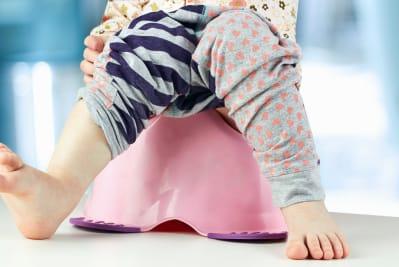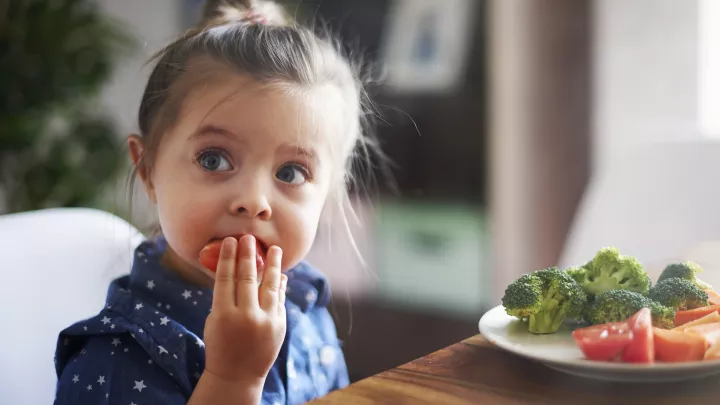
We've Got the Scoop on Poop
The topic of poop is a touchy subject for most and sometimes people think it is taboo to talk about. But poop, also called stool, can tell you a great deal about what’s going on with your child’s gastrointestinal (GI) tract, so it’s important to discuss with your child’s health care provider. The color, consistency and frequency are what most clinicians are going to ask you about when it comes to your child’s poop. But before discussing that, what exactly is it?
The journey begins with the food that you eat. Food follows down the esophagus, then stomach and into small intestine where it meets up with a bunch of digestive juices, bacteria and other cells. That is essentially what poop is: undigested food, bacteria, mucus and dead cells. So what is your child’s poop telling you?
Let’s start with colors
- Light brown or brown stool is the ideal color you want. This says that food has been well digested and absorbed.
- Green tells you that stool has moved very fast through the GI tract. Green is the color of bile and bile is made in the liver and sent to the gallbladder. It travels with the food through the intestine. Green is letting you know that not all of the food may have been digested.
- Yellow stool can signal that there may be some fat malabsorption going on. You may want to check with your child’s pediatrician if this lasts for more than a few days. It is common for breastfeeding babies, however, to have yellow seedy poops, but as your child gets older, stool should be brown, not yellow. The absorption of fat can be disrupted by various causes like intestinal diseases or an infection.
- White: White stool or clay-colored stool is due to the liver not releasing enough of its bile, therefore causing the stool to become whitish in color. This should be discussed with your child’s doctor as soon as possible.
- Black stool means that there might be a bleed somewhere higher up in the small intestine. It dries up as it moves through, causing the stool to be black. Talk with your child’s doctor if he or she is having black stools.
- Red stool is a sign of bleeding in the lower intestines. You should seek medical advice right away if your child has bright red poop. It may be a sign of infection or ulcerative colitis or another type of intestinal disorder. However, foods with red dyes may at time turn stool red.
Consistency of Stool
- Hard (pebble), firm, and cracked stool: Hard, firm stool can be a sign that stool is staying in the colon too long, that there may be a lack of good bacteria, or diet/lifestyle is poor. These stool types are generally hard and painful to pass and are considered constipation (constipation is defined as not stooling for more than three days and up to a couple of weeks).
- Soft log/sausage: This healthy poop is sausage or snake-shaped stool, generally soft, intact and brown in color that passes easily every one to three days.
- Mushy and watery/liquid: Mushy stool is usually made up of very soft pieces that fall apart when they hit the water. This may be due to poor lifestyle/diet change, higher stress than what the body is used to or an intestinal disorder. It can also happen when there is a change in exercise routine. The intestine has not absorbed all the nutrients and the colon has not reabsorbed the water properly. Water/liquid stool is considered diarrhea. It is often uncontrollable—you may find yourself running to the bathroom. This happens in some disease states such as Crohn’s disease, ulcerative colitis and short bowel syndrome, or if you have contracted a parasite or bacteria of some kind. Some people with food intolerances or allergies may also experience this. It is important to stay well hydrated when you are having diarrhea, and if it goes on for more than a few days you should contact your health care provider.
What else can affect stool in various ways:

- Viruses
- Bacterial infection
- Irritable bowel syndrome
- Inflammatory bowel disease
- Liver disease, short bowel syndrome, dysmotility disorders, etc.
- Food intolerances
- Food allergies
- Food poisoning
If you suspect your child has any of the above, seek medical advice.
What can you do to keep your child’s bowels in tip-top shape?
- Eat a balanced diet; Try and make your child’s plate half fruit and vegetables at every meal and choose fruits, vegetables and whole grains for snacks. Fiber will help keep your child full, it bulks up stool by holding water and cleans and sweeps the intestine. It can help with regular bowel movements. Check out Whats for Dinner to help plan a balanced plate!
- Eating foods with probiotics such as yogurt, kefir, miso, and sauerkraut can also help regulate your intestinal tract.
- Get moving! Exercise and play regularly, at least 30 minutes a day.
- Get plenty of water in your child’s diet. If your child’s urine is yellow to dark yellow, he or she is not drinking enough. Urine should be pale yellow in color.

